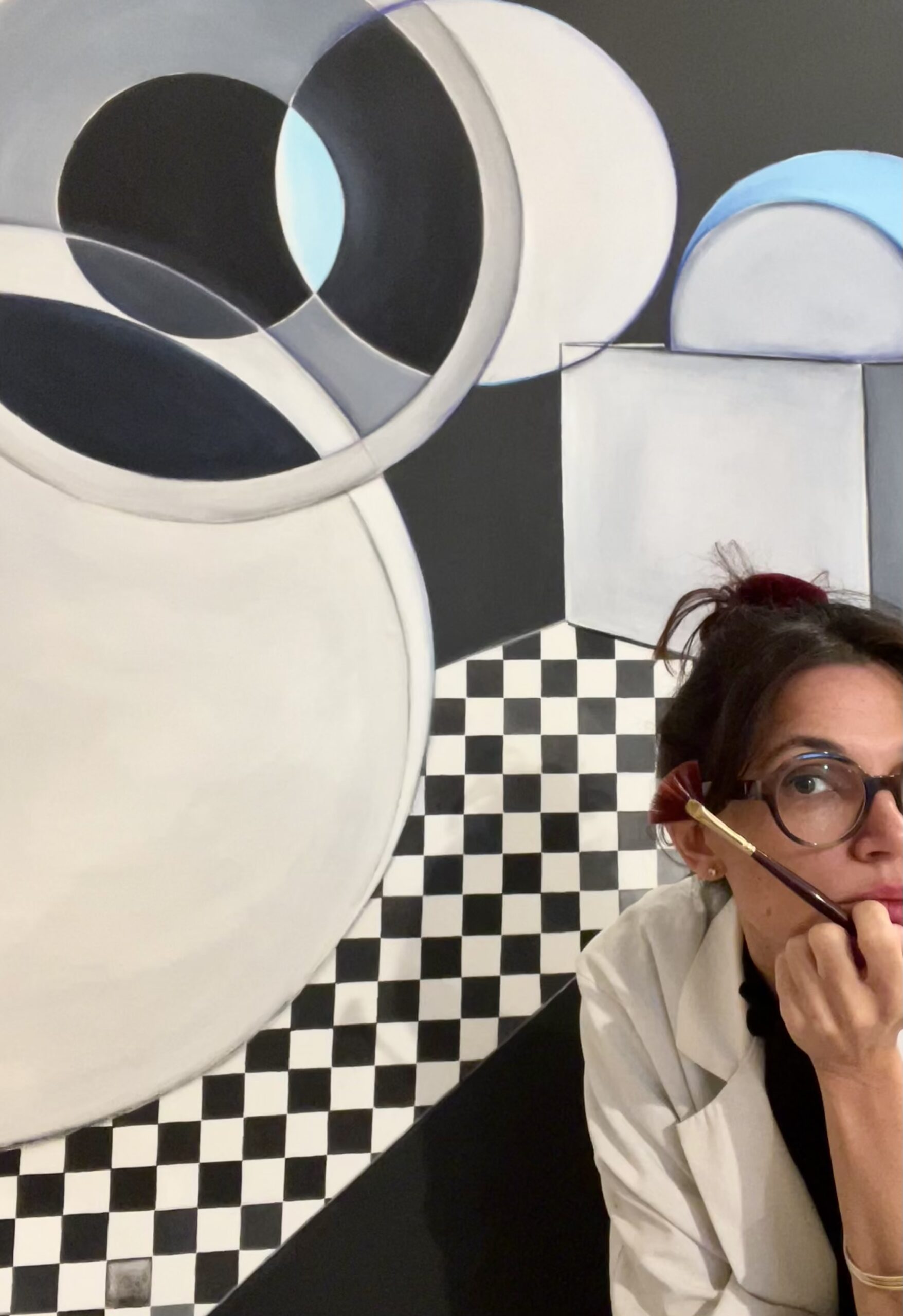In a corner of the studio, a mound of balls of wool purchased when the artist was studying in Paris, in a store that was selling its stock, not far from the Sorbonne. This was before the residency in Chile, before the collaboration with the choreographer Kirsten Debrock, before the return to Nîmes, the hometown ultimately chosen as the studio’s territory. Soft wool, blue like childhood. Intimate azure, emotional homeland—or rather motherland, the one Chateaubriand spoke of to describe his Breton roots. In the paintings, the sky only became blue in the Middle Ages, historian Michel Pastoureau has taught us, with the development of the Marian cult. At the time, blue was considered a warm color, uplifting (a royal symbol) and comforting, through its light. In Barbara Christol’s practice, this blue (slightly faded, as if by time) will come to redraw the places through an operation of weaving and unweaving; softening the edges of a table, a staircase; personalizing standardized spaces – as during a long-term residency in a college, the students having been invited to reappropriate an environment that is in fact imposed on them, and that many have ended up hating. During confinement, the artist watches tutorials on the internet in search of new techniques: she then treats herself to a thick, fleshy knit, which does not seek the pattern at all costs. Loose enough to embrace without burying. A blanket – always made with the same reserve of wool – which nestles in the architectures and in which the body curls up, which repairs and heals – in the tradition of Beuys – before finally resuming its place in the studio, filling the void, or rather the absence.
I Wish You Were Here
Blue emerges today in geometric paintings. A break-in of affect in a universe of matte blacks or sandy browns drawn with a ruler, creating a slight dissonance. An evolution of the palette accompanied by a certain liberation of gesture, which dares more organic loops, drawn freehand when the compass – the artist collects them – previously ordered the composition. Graph papers (the sheets of which, again, are often kept from school according to an affective ecology) welcome another register of sensitivity, a new fragility, carrying a great vitality. Dunes, pyramids, arithmetic games, sketches of cities or cosmos are activated, reviving the memory of the pictorial layer. A living memory that is not archived. A gesture that grows at the same time as the format of the painting grows, itself contingent on the space available in the studio: a way for Barbara Christol to tame the frame, she who says she “loves drawing in painting (the latter always impresses her a little) and vice versa.”

Now associated with the composer and musician Fabien Tolosa, and in partnership with France Alzheimer, she seeks a common language to express the illness – that of her mother –, the loss of identity and the possibility of other presences in the world. Conceived as nomadic, the future installation MEM.MORI brings together recovered objects and sounds like so many autobiographical stories without beginning or end, anonymous memories, patched together. We now know, thanks to neuroscience, that memory has no seat within the brain, that the encoding process involves neuronal connections – this sprawling network – and chemical exchanges. MEM.MORI works in this way, for and through circulation, a small factory for manufacturing interaction, the starting point for a mediation work that will then be exported to hospitals, nursing homes. A way of “responding to what is happening,” to use the words of Vinciane Despret about the “New Patrons” program. An answer that could go beyond the question. A fabrication.
Céline Piettre (journalist, La Gazette Drouot)
